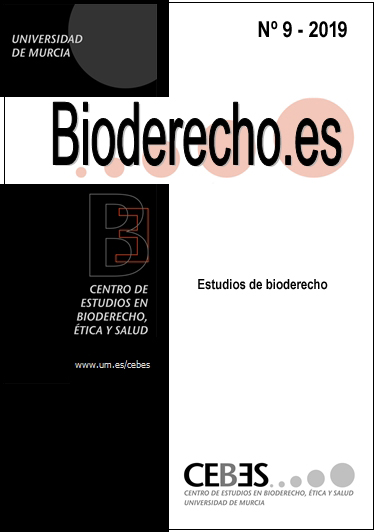Robótica, cine y derecho
Robótica, arte y derecho
Abstract
Robotics, in particular that which has a human figure -android- is shown as a sphere of present and future development. The European Union studies the future regulation of ethical and legal issues that affect robotics in its relationship with human beings. The aim is to regulate the protection of all people who interact with robots.
The study of the evolution of the image of the robot is much older than its regulation, and is present in virtually all artistic disciplines. In cinematography, in particular, robotics is a recurring theme within the field of science fiction. The article presents a study of the image and ethical category of the cinematographic robot from the origins of cinema; Analyzing his vision from the human being. In this evolution the great weight of the android image is observed, which generates respect, fear, uncertainty; in front of the robots machines.
After studying the evolution of the robot's image, it is possible to face with greater clarity the legal challenges that are faced. The image of the robot is fundamental; and even more so in groups in need of special protection. This may lead to the conclusion of the need to control the image of the robot and its resemblance to the human being in the cases of interaction with subjects in need of protection, who do not easily distinguish reality from fiction, due to age or temporary or permanent physical limitations .
Downloads
-
Abstract878
-
PDF (Español (España))849
Los autores que publican en esta revista están de acuerdo con los siguientes términos:
- Los autores conservan los derechos de autor y garantizan a la revista el derecho de ser la primera publicación del trabajo, con la obra disponible simultáneamente bajo una licencia Creative Commons Atribución-Compartir Igual 4.0 Internacional (CC BY-SA 4.0), que permite a otros copiar y redistribuir la obra en cualquier medio o formato, remezclar, transformar y construir a partir de la obra para cualquier propósito, incluso comercialmente, siempre que: a) se reconozca la autoría y publicación inicial en esta revista; b) se indiquen los cambios realizados; y c) si se transforma o crea a partir de la obra, se distribuya la contribución bajo la misma licencia CC BY-SA 4.0.
- Los autores pueden establecer por separado acuerdos adicionales para la distribución no exclusiva de la versión de la obra publicada en la revista (por ejemplo, situarlo en un repositorio institucional o publicarlo en un libro), con un reconocimiento de su publicación inicial en esta revista.
- Se permite y se anima a los autores a difundir sus trabajos electrónicamente (por ejemplo, en repositorios institucionales o en su propio sitio web) antes y durante el proceso de envío, ya que puede dar lugar a intercambios productivos, así como a una citación más temprana y mayor de los trabajos publicados (Véase The Effect of Open Access) (en inglés).



